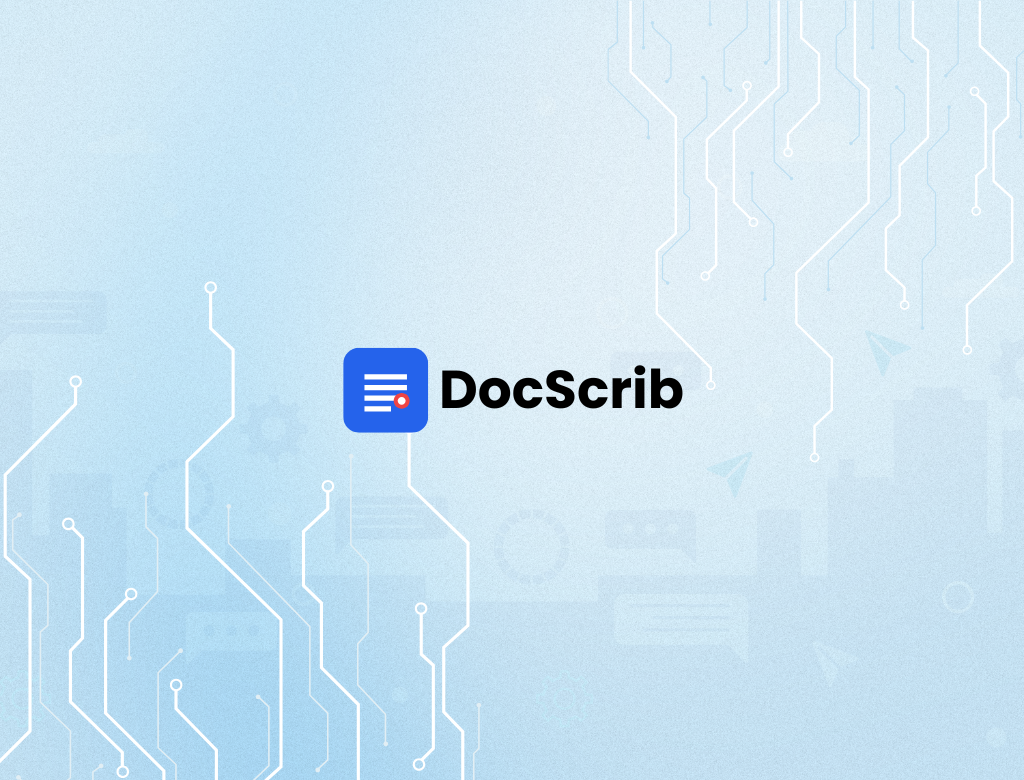Time is medicine. For every minute a clinician spends typing up notes, they’re pulled away from patient care, follow-ups, or—let’s be honest—a well-earned break. In recent years, the rise of AI in healthcare has taken aim at one of the profession’s most frustrating burdens: clinical documentation.
Now, with the emergence of advanced AI-powered medical scribes, the future of documentation is no longer a slow, manual task—it’s ambient, instant, and intelligent.
🩺 The Documentation Dilemma
Doctors spend an average of 4.5 hours per day on EHR tasks. That’s nearly half their shift behind a screen, not in front of patients.
Clinical notes have grown in complexity due to:
-
Regulatory compliance (e.g., ICD-10, MIPS, HIPAA)
-
Billing accuracy and audit preparedness
-
Medico-legal protection
-
Patient record continuity
The problem? Human brains weren’t built for juggling patient interaction and detailed data capture at the same time.
⚙️ Enter AI: The Scribe That Never Sleeps
AI-driven tools like DocScrib are built to do one thing exceptionally well: listen, understand, and record the clinical encounter in real-time. These systems:
-
Use natural language processing (NLP) to transcribe spoken dialogue
-
Identify structured elements (e.g., HPI, ROS, PE, A/P)
-
Generate clean, formatted SOAP notes
-
Learn individual clinician style over time
This isn’t just voice-to-text dictation. It’s ambient AI that understands context, intent, and clinical semantics.
🧠 How It Works in Practice
Imagine walking into a patient exam. You speak naturally:
“John is a 54-year-old male with a history of type 2 diabetes. Today he presents with left foot pain…”
The AI in the background captures the interaction, processes it in real-time, and outputs:
CC: Left foot pain
HPI: 54-year-old male with type 2 diabetes presents with 3-day history of localized pain and swelling...
ROS: Negative for fever, chills, or trauma...
PE: Left foot erythema, tenderness, no open wounds...
A/P: Possible cellulitis. Start cephalexin, recheck in 48h...
By the time the visit ends, your note is ready—no typing, no dictation, no end-of-day backlog.
🚀 The Benefits: Beyond Just Saving Time
✅ 2–3 Hours Saved Daily: Clinicians report ending their day on time, not hours later.
✅ Reduced Burnout: Less screen time, more human interaction.
✅ Improved Accuracy: Fewer omissions or inconsistencies.
✅ Faster Reimbursement: Cleaner documentation leads to fewer billing denials.
✅ Better Patient Experience: Eye contact > keyboard clatter.
🧩 Why This Is More Than a Trend
Healthcare is moving toward:
-
Value-based care, which requires better documentation
-
Remote and asynchronous care, where context is king
-
Multilingual, accessible care, where transcription needs to be accurate across dialects
AI is not replacing doctors—it’s removing the mechanical burden that distracts them from practicing medicine.
🔐 Is AI Secure for Medical Use?
Yes, but only when done right. Platforms like DocScrib are built with:
-
End-to-end encryption
-
HIPAA-compliant architecture
-
Access control and audit trails
Security is a non-negotiable—and any AI tool worth trusting should prove it.
🔍 Final Thoughts
AI is transforming the clinician’s daily grind. What used to be an end-of-day chore—charting, reviewing, correcting—can now be completed in real time. The result? More time for care. More clarity in notes. More humanity in medicine.
Want to Experience It?
See how DocScrib is redefining medical documentation.
Visit https://docscrib.com/
